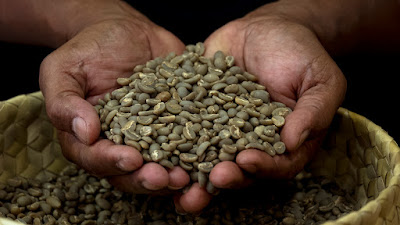Youth in Agriculture
There is great potential for employment growth in the agricultural sector. But, we face a big problem:
How to make agriculture attractive to young people.
Evidence suggests that most young people are not attracted to agriculture and to the rural areas. A farmer has to work hard, and in almost every case, settle for very low incomes, living in poor conditions with little infrastructure and little prospect of improving their livelihoods. The anecdotal evidence suggests that most young people do not find this lifestyle attractive, and leave in search of something different. The graph below shows how sizeable this phenomenon is of young people abandoning opportunities in the agriculture sector.
Source: Census 2015. These are smoothed ratios standardised for
each age.
This graph shows (smoothed) ratios of the number of residents in Dili compared to other municipalities. If the age distribution was the same in both groups, the lines would be horizontal lines equalling 1.0. Note that the Dili curve is well below the “Others” for children aged 16 and below, and for older adults aged above 42. The “Youth Bulge” is very evident in Dili, with almost double the proportion of youth aged in their mid-20s compared to other municipalities. The (primarily) rural areas are populated with children and older adults, while many young people leave the rural areas and move to Dili in their older teens.
Many young people do not see a future in the rural areas, especially not in agriculture. Significant investment and a shift in approach is going to be needed, creating a different “type” of agricultural activity and rural non-agricultural economy that is attractive to more educated young people.
The challenge of attracting young people to work in agriculture is not unique to Timor-Leste. Many countries of the world, both developed and low-income countries, experience the same phenomenon. Studies have investigated strategies for how to reverse the trend away from agriculture.
What’s
the most important thing to do?
Create
opportunities for young people to be part of a transformation of agriculture
from subsistence / traditional (lots
of manual labour, poor incomes, with few non-farm employment opportunities) to modern (more use of inputs and
equipment, increasing productivity, more marketed surplus, a range of non-farm
businesses).
Youth and young adults are vital if we want to see that agricultural transformation take place. Younger people usually have more education than their parents, are more able to adapt to new approaches and technologies, and have more physical energy for their work. With a longer working life ahead, young people also have more incentive to work on improving their incomes, to “invest in their future”.
In addition to general strategies to modernising agriculture, countries have found great benefit in strategies specifically designed to attract young people to a career in agriculture. Here’s the five main approaches:
1. Incorporate agriculture, food and nutrition in school curricula from
early ages
Start them early: Including food and nutrition in school curricula from as early as primary school raises young people’s interest in agriculture and the food sector. And even better if this is practical - school gardens, midday meals programs, field trips, all help broaden the young person’s mind.
2. Promote
Farming as a Business:
Young people will be more attracted to farming if they can see that it uses some of the skills they developed during their school education. Seeing farmers as business people also helps raise the status of a farmer in the eyes of young people.
3. Spread the
word about successful young entrepreneurs
There are success stories out there of young people who have built successful businesses, either ‘on the farm’ or in agricultural support businesses. Let’s spread the word about these success stories, and have young people learn from each other. These role models can paint a different picture in the mind of young people for what success in agriculture looks like, and inspire them to take on new challenges.
4. Embrace technology in agriculture
Improved farming practices rely on two key aspects of technology: information and labour-saving tools. Increasing use of information and communications technology places young people at the heart of new farming practices, and helps them see the potential benefits to their skills. In addition, tools and equipment that save labour are the key to improved productivity, and help young people see that they can lead their family’s farm business into a new and modern world that does not stand in contrast with the “bright lights of the city”.
5. Create
awareness of emerging agribusiness opportunities
Agriculture is far more than what takes place in the fields. Agribusiness opportunities abound, particularly as farming practices modernise. For example, the use of inputs will increase, from seeds to fertiliser to fencing and more, all of which create opportunities for young entrepreneurs.
What’s needed is a
concerted campaign to provide accessible entry points for young people into
improved agricultural practices and to creating successful agribusinesses. This will unlock rapid growth in incomes
through agriculture, greater food security for families, and vast and growing
employment opportunities for young people.
Opportunidade,
Opportunidade, Opportunidade
You can read in
more detail about programs for young people to modernise agriculture in the
report here: https://www.monashintimor.org/publications





Comments
Post a Comment